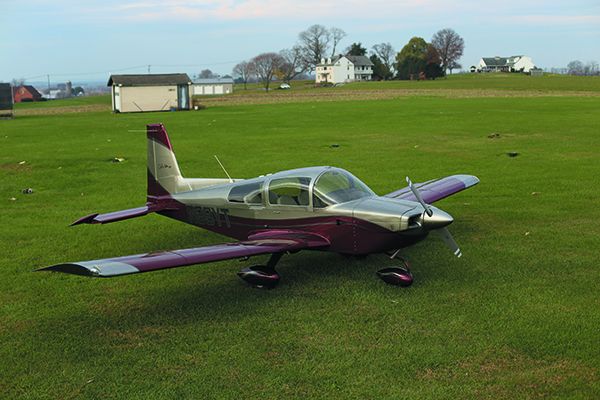
The paint shop survey report in the August 2020 Aviation Consumer was timely because I was ready to drop big money on a custom paint job for my Grumman. In addition to reading all of the magazine’s paint shop articles over the past two decades, I came up with an involved planning process, and my experience can be helpful to others staring down this major time-consuming project.
Moreover, my project was unique because it included a basecoat/clearcoat, the way all automobiles are painted. This proved to be an elusive option and it wasn’t something all shops will get involved with, even though a clearcoat finish is the modern standard in aircraft painting projects, and has been the standard in the automotive world for ages.
Herewith is a recap of my journey on this complex but hugely successful project and how you might learn from it. This is my second paint project, as I painted my AA5 Traveler in 1998. I walked away with valuable lessons from both investments, and a first-class paint job from a non-mainstream shop that understands the meaning of customer service.
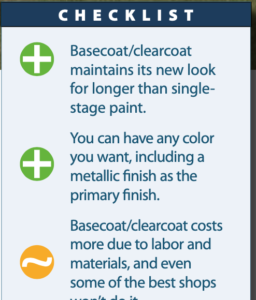
GONE SHOPPING
To begin my due diligence, I came up with a three-step shopping process, which included reviewing past survey results and feedback, developing an 18-point questionnaire to review with each prospective paint shop and then deciding on which shops to visit for an estimate. As I base my Grumman Tiger in Central Pennsylvania, there are quite a few top shops within a 1.5-hour flight. I chose to visit four, including Lancaster Aero, Three In The Green, KD Aviation (Reese Aircraft) and Royal Aircraft. All had favorable reviews in the latest paint shop survey.
To remain consistent throughout the estimating process, I used the 1998 paint scheme from the Traveler, which is basic—one color with three accent stripes. As with any major project, for an accurate estimate it is crucial that the paint shop sees the plane in person for condition, and to ascertain the amount of body and prep work needed.
In my case, some estimates included bodywork within the final number and some did not. Some included options based on my scheme and some did not. Understanding and evaluating the scope of each estimate is essential. That’s not always apparent. Options abound that will increase the final price, including an off-white base color, split paint scheme, metallic paint or metallic trim colors.
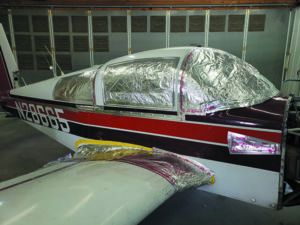
What unique upgrade I was particularly interested in was basecoat/clearcoat, the way all automobiles are painted. A basecoat/clearcoat finish has a non-gloss color layer (the basecoat) and a gloss layer (the clearcoat) to protect against oxidation. Some people like to think of the clearcoat as a type of permanent wax. Basecoat/clearcoat systems tend to hold their gloss and “wet look” longer than single-stage finishes, which as it often goes in the automotive world ultimately means less waxing and detailing in the future. Amen to that! Though every shop said they could do it, and despite asking for one, no paint shop gave me an estimate for it. Essentially, they all dissuaded me from my dream finish.
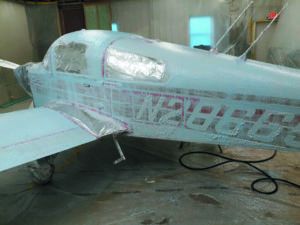
PRICE, LOGISTICS MATTER
Estimates started rolling in about two to three weeks after I visited the shops, and ranged from $15,000 to a whopping $24,000. Big numbers to swallow, but for me the decision-making process for selecting the final shop was relatively easy. In every Aviation Consumer paint shop satisfaction survey, both KD Aviation and Lancaster Aero have been highly praised for their work and customer service. The bottom-line pricing was comparable at both shops, so the deciding factor was distance. It’s a 30-minute drive to Lancaster Aero for progress visits versus 2.5 hours to drive over to KD Aviation. The shock came when I asked the Lancaster Aero to book the next available reservation slot and I was told it would be a one-year wait—May 2021. In the refurbishment business—especially for long projects like paint work—that kind of lead time isn’t uncommon at better shops.
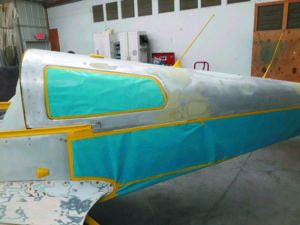
Still, frustrated by the yearlong wait, I made an 11th-hour Hail Mary visit to Cliff Weaver at Circle W Restorations in East Berlin, Pennsylvania. The shop was recommended by my friend Marc Roberts, an aircraft owner and AOPA Legal Services Plan attorney, who assured me the shop can do a world-class job. The bulk of Circle W’s workload is automotive and motorcycle projects, but Weaver has been painting airplanes for 40 years. Circle W Airfield (PA72) is a 2200-foot turf strip, and a short 25-minute drive from my house, so the close location was appealing to me.
The estimate—$17,000—was based on what I really wanted: an adaptation of my Cheetah N9690U’s style, which is a split scheme with silver over red. Weaver said he would have to shoot in a basecoat/clearcoat because the silver and red metallic finish would oxidize too quickly. Finally, someone was willing to do what I wanted, when other shops wouldn’t even quote me a clearcoat finish.
With a working budget of $15,000 to $24,000, the approximate $17,000 quote was something I could surely live with in hopes of getting my dream finish. The automotive work in progress at his shop was impeccable, and instilled confidence. The estimate to completion was six weeks, but I planned on seven.
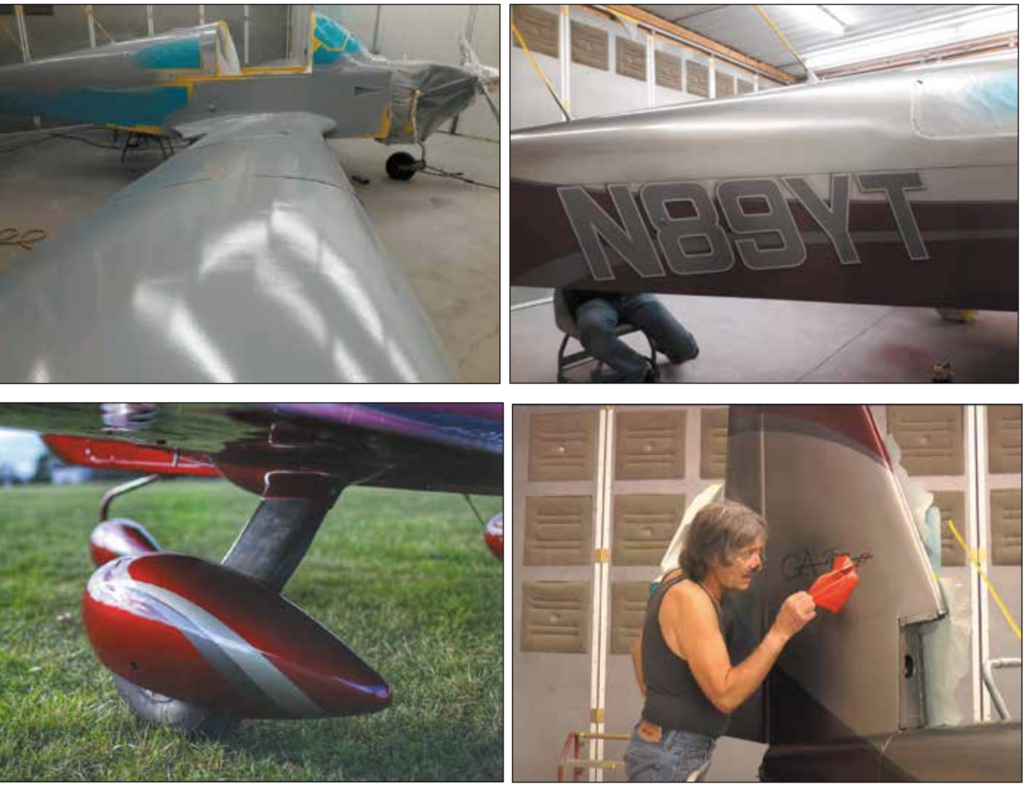
IT’S ALL ABOUT PREPPING
The airplane was properly stripped per the maintenance manual instructions. Stripping of course uncovered a host of dings, dents and other maladies. The entire plane was acid etched and power-washed before the bodywork began. Here is where basecoat/clearcoat diverges from single-stage (SS) paint. Glossy metallic paint is unforgiving as it highlights any irregularities, so the prep and bodywork must be impeccable.
Jason is the shop’s bodywork expert, and he did an outstanding job filling all the hail dents and dings, especially on the wing and elevator leading edges. Next were two layers of a high-build primer sanded smooth between each coat to give the smoothest possible surface for the metallic paint. Last was a coat of epoxy primer.
Finally, six weeks into the project, we were ready for color. The order of painting in basecoat/topcoat is non-traditional as well. The lighter colors are sprayed first, then masked and darker colors are sprayed over. For example, the wheel pants are red with a silver/gray stripe. You would expect it to be painted red then add the stripes. Not so—the wheel pant was painted completely in silver first. The stripe is masked off and then painted in gray, masked off again and then red is the final coat. I asked why and was told that the silver won’t look right trying to cover the red. The results speak for themselves.
As time went on, I because more impressed with the shop’s abilities and artistic acumen. Toward the end, rather than directing the scheme, I let Weaver tell me what he thought would look good. I had planned on simple block-style N numbers, but he suggested a thin perimeter stripe with an airbrushed shadow (for a simple $100 up-charge). The result is beautiful.
Like most upgrades, there are pros and cons, but for this clearcoat paint job the pros certainly outweighed the cons. Yes, it’s more expensive and those looking for a bargain won’t want to pay the premium. Still, my opinion is that many aircraft paint shops are stuck in the past by refusing to take on a better and more modern method of painting—a process that’s long been proven by the automotive industry.
Worth mentioning is the cost of the paint—an area where you might have some cost control. Circle W uses PPG automotive paint, typically the top-of-the-line choice. But when we discovered that a gallon of the red metallic was $1664, Weaver suggested using PPG Shopline. A gallon of the same red metallic was $457. I asked what the difference was and was told there really wasn’t any. My Grumman soaked up two gallons—a whopping $2414 difference.
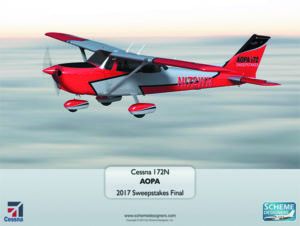
Everyone knows that clearcoat paint jobs are the standard in the automotive world, but why has the process been a slow adoption in the lower-end aircraft restoration world? After talking with some industry pros, we couldn’t find any good reasons other than some shops are set in their ways, sticking with the single-stage process that has worked for them for years. But for metallic finishes, there’s no other option than basecoat/clearcoat systems. Still, there are plenty of reasons to cover any paint work in clearcoat.
Our go-to paint specialist, Craig Barnett at Scheme Designers (who specifically noted the Sherwin Williams SKYscapes product), told us that a basecoat/clearcoat affords an opportunity to use less paint because there is better coverage. Better yet, if the final clearcoat layer covers the entire aircraft, it reduces the so-called tape-edge appearance /feel of stripes. A SKYscapes basecoat/clearcoat also has a short drying time between color applications, which reduces the time the aircraft is in the paint shop. The shop can apply multiple colors in one day, instead of it taking multiple days per color application.
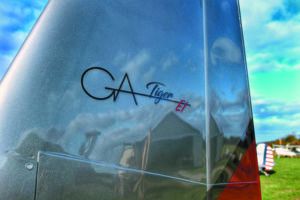
Barnett recalled the premium and complex four-color paint scheme done on an AOPA sweepstakes Cessna. “We applied that entire scheme—from masking to final color—in just two days. The process might generally take over a week using precut vinyl paint masks.”
Julie Voisin at the Sherwin Williams Aerospace Coatings division reiterated the fact that a clearcoat simply reduces upkeep. “Without a sharp edge on a stripe, for example, there are less chances of adhesion issues since the entire paint job is wrapped in the clearcoat,” she told us. Voisin also pointed out that repairing damage to the clearcoat is a heck of a lot easier than repairing the paint surface. “In many cases you won’t have to get a custom color mixed for the damaged area. That protecting clearcoat surface is a sizable advantage when it comes to upkeep,” she said. There’s also better UV protection. Since weight is a concern, the typical clearcoat thickness is roughly 35 to 50 microns.
Voisin told us that washing and polishing a clearcoat finish is really no different than caring for a single-stage coating. Avoid Carnauba wax. “Wax will build up on and eat away at the surface. Simply clean it and go,” she advises.
Some shops and buyers are lukewarm to the idea mainly because of cost. And you’ll pay more. We talked with several, including Master Aircraft Services in Arizona. It consistently gets high marks in our paint shop surveys. “As an experiment, we have used the types of paints where, by their nature, you spray them on and then clearcoat the whole airplane. It’s quicker and helps make the edges of the design less abrupt, but for many we don’t see the tremendous cost increase as a sufficient incentive,” it told us.
—Larry Anglisano
THE TAKEAWAY
As a 30-year subscriber to Aviation Consumer, I wanted to give back to the community and describe my experience. It pays to visit lesser-known shops. I quickly learned Circle W was the right shop for me. Its owner is a pilot and aircraft owner, and I believe that makes a difference. Every visit to Circle W left me enthusiastic and inspired. On delivery day—almost eight weeks after drop-off—I was ecstatic to get more than I wanted at a reasonable price. Anything less wouldn’t have satisfied my initial vision.
As reported in the surveys, communication is key. To that end, Weaver sent me progress pictures via text several times a week so I could watch the progress from the comfort of my home. It was amazing customer service. Why don’t all shops do that? We should insist on it.

